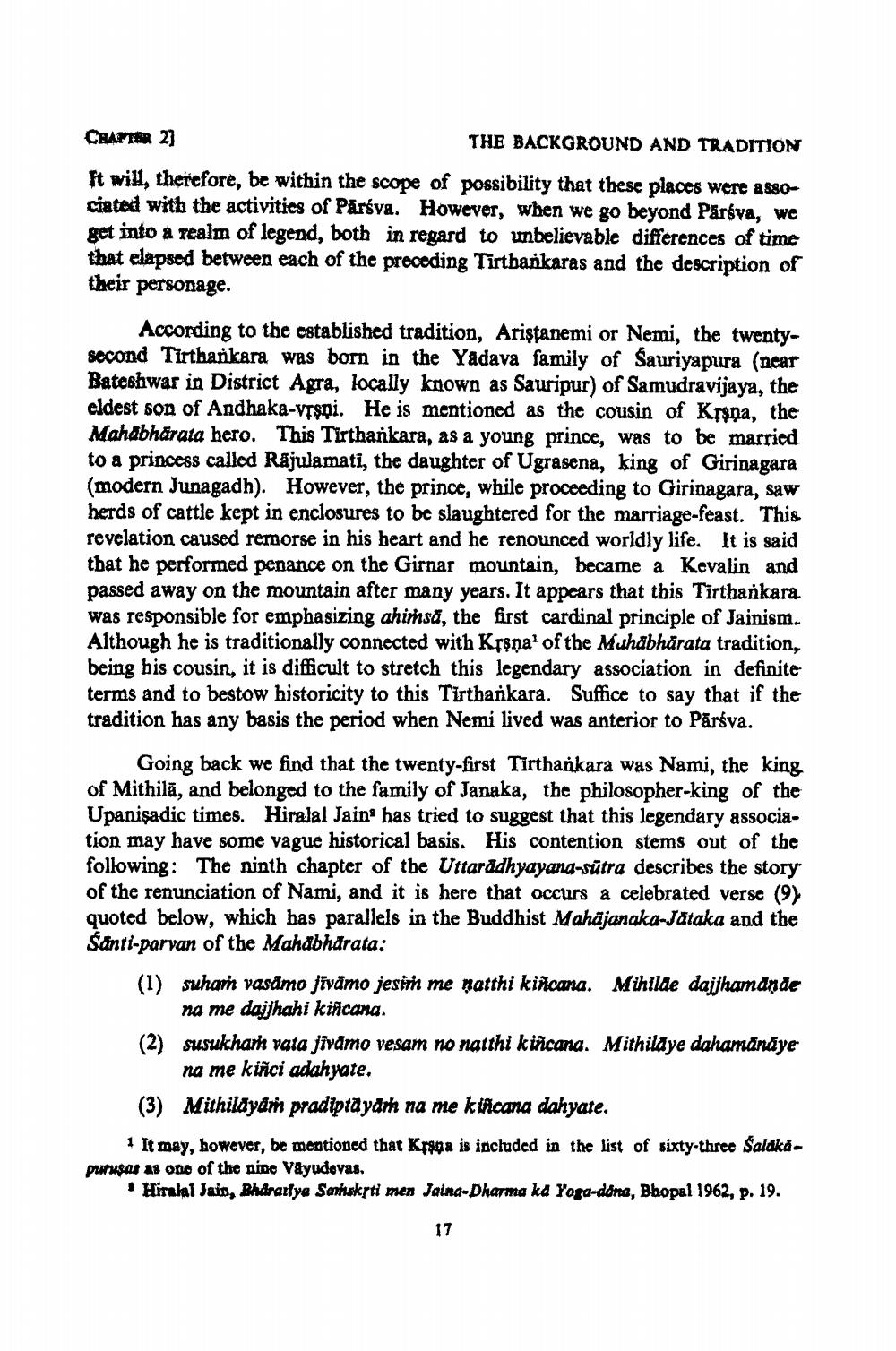________________
CHAPTER 2]
THE BACKGROUND AND TRADITION It will, therefore, be within the scope of possibility that these places were associated with the activities of Pārsva. However, when we go beyond Pärsva, we get into a realm of legend, both in regard to unbelievable differences of time that elapsed between each of the preceding Tirtbankaras and the description of their personage.
According to the established tradition, Aristanemi or Nemi, the twentysecond Tirthankara was born in the Yadava family of Sauriyapura (near Bateshwar in District Agra, locally known as Sauripur) of Samudravijaya, the eldest son of Andhaka-vyspi. He is mentioned as the cousin of Krsna, the Mahabharata hero. This Tirthankara, as a young prince, was to be married to a princess called Rajulamati, the daughter of Ugrasena, king of Girinagara (modern Junagadh). However, the prince, while proceeding to Girinagara, saw herds of cattle kept in enclosures to be slaughtered for the marriage-feast. This revelation caused remorse in his heart and he renounced worldly life. It is said that he performed penance on the Girnar mountain, became a Kevalin and passed away on the mountain after many years. It appears that this Tirthankara was responsible for emphasizing ahimsa, the first cardinal principle of Jainism. Although he is traditionally connected with Krşna' of the Muhabharata tradition, being his cousin, it is difficult to stretch this legendary association in definite terms and to bestow historicity to this Tirthankara. Suffice to say that if the tradition has any basis the period when Nemi lived was anterior to Pārsva.
Going back we find that the twenty-first Tirthankara was Nami, the king of Mithilä, and belonged to the family of Janaka, the philosopher-king of the Upanisadic times. Hiralal Jain' has tried to suggest that this legendary association may have some vague historical basis. His contention stems out of the following: The ninth chapter of the Uttarddhyayana-sutra describes the story of the renunciation of Nami, and it is here that occurs a celebrated verse (9) quoted below, which has parallels in the Buddhist Mahajanaka-Jataka and the Santi-parvan of the Mahabharata:
(1) suham vasdmo jivāmo jesim me natthi kiñcana. Mihilae daithamande
na me dajhahi kincana. susukharh vata jivamo vesam no natthi kincana. Mithilaye dahamánaye
na me kiñci adahvate. (3) Mithilayam pradiptaydrh na me k ticana dahyate.
1 It may, however, be mentioned that Kripa is included in the list of sixty-three Saldkapurusas as one of the nine Vayudovas.
"Hiralal Jain, Bhdrarfya Sanskrti men Jalna-Dharma ka Yoga-dona, Bhopal 1962, p. 19.
17




